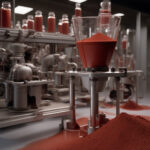Phytoremediation: A Promising Solution to Combat Microplastic Pollution
Recent research from the Hubei Key Laboratory of Wetland Evolution and Ecological Restoration presents an innovative solution to the pressing issue of microplastic pollution: phytoremediation. This method utilizes the natural abilities of plants to absorb and degrade harmful substances, positioning them as key players in tackling the complex problem of plastic waste.
The proliferation of microplastics, tiny plastic particles stemming from the degradation of larger plastic items, has infiltrated terrestrial, aquatic, and atmospheric ecosystems. These particles threaten wildlife and may pose risks to human health, emphasizing the urgent need for effective remediation strategies.
Phytoremediation provides a sustainable alternative to traditional pollution control methods. This technique employs specific plant species, known as hyperaccumulators, capable of capturing and degrading microplastics. Through mechanisms such as phytoaccumulation, plants absorb microplastics through their roots, while phytostabilization immobilizes plastics within the soil, preventing their spread. Additionally, phytofiltration filters microplastics from water, offering a comprehensive remediation approach across varied environments.
The study underscores the requirement for further research to optimize these techniques. As lead researcher Dr. Yuyi Yang stated, “Phytoremediation isn’t merely a technique; it’s a sustainable revolution in our battle against plastic pollution.” By integrating plant-based solutions into existing waste management frameworks, the potential to enhance sustainability and efficiency in plastic pollution control emerges.
Overall, phytoremediation stands to play a crucial role in reducing microplastic pollution and revitalizing ecosystems. This research could pave the way for innovative environmental management strategies that not only combat plastic waste but also promote biodiversity and restore ecological health.












